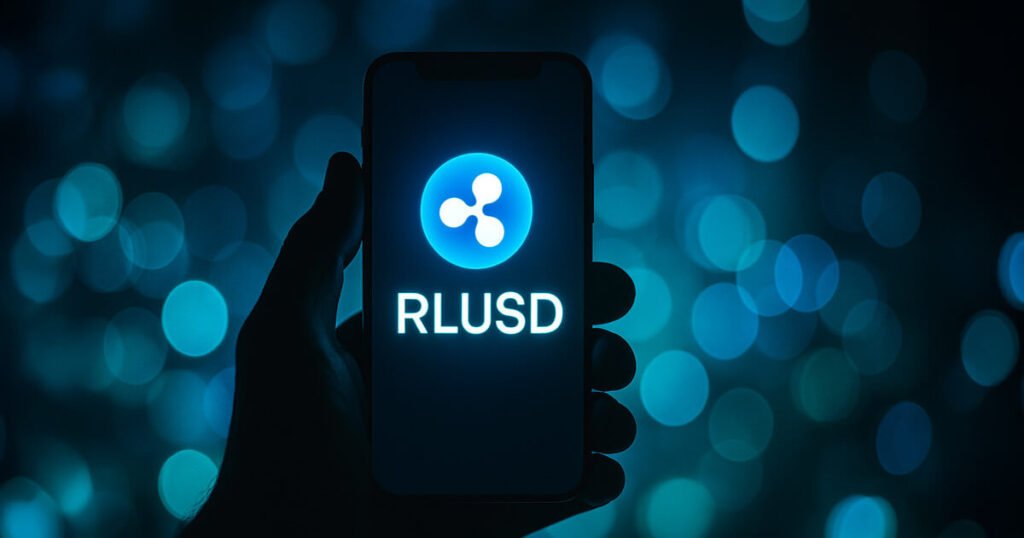Securitize and XRP Ledger: Paving the Way for Institutional Finance on the Blockchain
Securitize, a cutting-edge tokenization platform, is on the cusp of a transformative integration with the XRP Ledger (XRPL). This significant move, announced on September 23, highlights the intertwining of institutional finance and blockchain technology. Notably, this integration could pave the way for BlackRock’s USD Institutional Digital Liquidity Fund (BUIDL) to be directly utilized on the XRPL. This potential development marks a pivotal moment for XRPL and underlines its increasing relevance in the realm of real-world assets (RWA).
Recently, XRPL has gained traction among institutional players such as Guggenheim, VERT, and Dubai Land Registry. This momentum has propelled XRPL into the top ten blockchains for RWA activity, demonstrating its appeal in capital markets. The ongoing collaboration with Securitize represents a significant leap in strengthening these institutional ties and further establishing XRPL as a crucial player in RWA initiatives. As regulators begin to look more favorably on blockchain solutions, the platform’s rising stature signals a promising future for asset digitization.
Adding to the excitement, Ripple has unveiled an ambitious roadmap for XRPL that positions both XRP and RLUSD as essential components for stablecoin payments, collateralized lending, and more extensive institutional applications. The anticipated influx of the BUIDL fund—a $2 billion powerhouse within the tokenized money market segment—could act as a landmark event, validating XRPL’s capabilities and robustness as a blockchain solution for institutional finance.
RLUSD Integration: Revolutionizing Tokenized Transactions
To facilitate this evolution, Ripple and Securitize are set to launch a smart contract integration that will embed RLUSD into the Securitize tokenization platform. This integration allows investors to seamlessly exchange shares in the tokenized funds, such as BlackRock’s BUIDL and VanEck’s VBILL, for RLUSD on a 24/7 basis. This innovative approach will not only heighten liquidity but also present a convenient pathway for investors to switch between tokenized money market funds and on-chain stable assets.
As it stands, RLUSD’s integration for BUIDL is already operational, with support for VBILL expected to follow soon. Monica Long, Ripple’s president, underscored the importance of this collaboration, stating, “Last week, we announced DBS and Franklin Templeton using $RLUSD as a liquid, stable, and compliant exchange mechanism for tokenized assets in lending and trading use cases.” She emphasized that Securitize’s incorporation of RLUSD enhances accessibility for investors involved with BlackRock and VanEck’s tokenized offerings.
The recent performance of RLUSD corroborates its growing influence, as it now boasts a market capitalization of $741.4 million, making it one of the fastest-growing stablecoins in the ecosystem. The strategic melding of RLUSD with prominent tokenized funds positions it as a pivotal force at the intersection of traditional finance and blockchain, promising to elevate overall market dynamics.
The Expanding Role of XRPL in Capital Markets
XRPL’s burgeoning recognition stems from its ability to appeal to institutions seeking reliable blockchain solutions for RWA activities. With significant entities like Dubai Land Registry and Guggenheim onboard, the ledger has cultivated a reputation for facilitating advanced tokenization capabilities. The potential onboarding of BlackRock’s BUIDL fund could not only enhance its credibility but also offer a fresh vehicle for institutional investors to explore the benefits of digital asset management.
The importance of XRPL extends beyond just increasing liquidity; it also empowers the financial sector to embrace a more transparent, efficient, and cost-effective approach to asset management. As it integrates more with institutional players, XRPL is poised to reshape traditional finance paradigms, pushing the envelope towards a more digitized and decentralized future.
Bridging Traditional Finance and Blockchain Technology
The integration of RLUSD with Securitize signifies a broader trend where traditional finance and blockchain technology converge, creating new pathways for innovation and accessibility. As developments unfold, both institutions and investors stand to benefit from the efficiencies of blockchain, such as lower transaction costs, faster settlement times, and increased competitive advantages.
The ripple effects (no pun intended) of these advancements will likely encourage further institutional adoption, pushing more players within the financial sector to explore tokenized assets. This could ultimately lead to a comprehensive transformation in how assets are managed, traded, and liquidated.
Looking Ahead: The Future of Institutional Adoption
While the technological advancements signify a step forward, they also raise questions about regulatory scrutiny, security, and trust in the rapidly evolving space of blockchain applications. Investors and institutions will need to navigate these challenges as they consider incorporating blockchain solutions into their financial operations. However, the ongoing commitment from industry leaders like Ripple and Securitize to create compliant and efficient systems points to a future where blockchain becomes an integral part of financial infrastructure.
As the landscape shifts, a proactive approach from regulators and monetary authorities will be crucial in developing a framework that supports innovation while maintaining market integrity. This would not only instill confidence among institutional players but also herald a new era for the global financial system.
Conclusion: A Milestone for Blockchain and Institutional Finance
In summary, the collaboration between Securitize and XRP Ledger marks a significant milestone in the relationship between institutional finance and blockchain technology. As the integration of BlackRock’s BUIDL and the RLUSD stablecoin takes shape, it sets the stage for transformative changes in the asset management sector. Wall Street’s increasing interest in blockchain solutions promises not only to elevate XRPL’s status in capital markets but also to foster an environment of greater compliance and accessibility for digital assets.
The developments in this space signal an exciting future where traditional financial institutions embrace digital asset platforms, driving deeper connections between conventional finance and innovative blockchain technology. The ultimate outcome remains to be seen, but the indicators suggest that we are on the cusp of profound changes that could revolutionize how financial transactions are managed globally. The integration of robust solutions like XRPL and RLUSD could very well define the next decade of finance.


